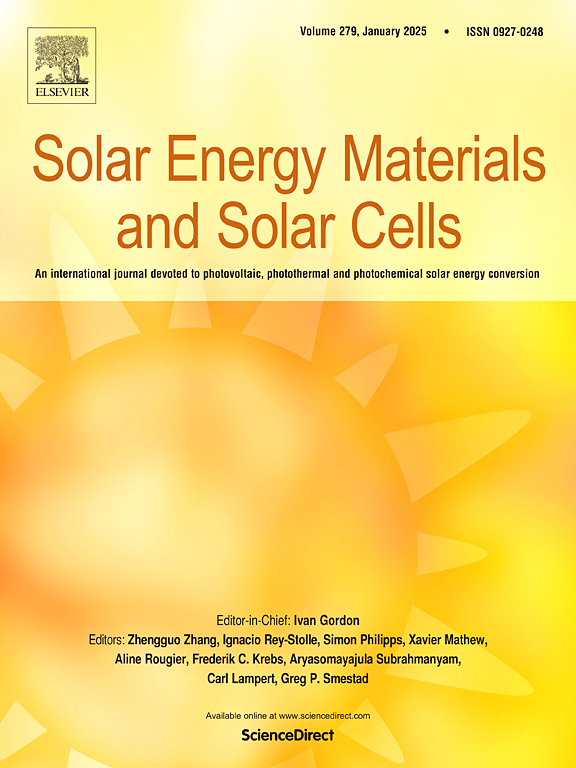Quantifying the impact of energy matrices on life cycle cost assessment of N partly covered photovoltaic thermal concentrators coupled to conical solar still
IF 6.3
2区 材料科学
Q2 ENERGY & FUELS
引用次数: 0
Abstract
This study presents a comprehensive energy, exergy, and life cycle cost analysis of a novel conical solar still integrated with N photovoltaic thermal compound parabolic concentrators (N-PVT-CPC-CSS), aimed at addressing water scarcity using sustainable solar energy. A detailed mathematical model is developed and validated against experimental data, showing strong agreement with correlation coefficients of 0.97, 0.98, and 0.99 for water temperature, glass temperature, and freshwater yield, respectively. Annual performance metrics, including overall energy and exergy efficiencies, are computed using MATLAB for the climatic conditions of New Delhi, India. The system achieves notable thermal and exergy efficiencies of 56.51 % and 16.61 %, respectively. Key energy metrics such as energy payback time (EPT), energy production factor (EPF), and life cycle conversion efficiency (LCCE) are determined to be 1.134 years, 0.45 per year, and 0.4337, respectively. Comparative analysis reveals that the proposed N-PVT-CPC-CSS reduces EPT by 77.32 % and enhances LCCE by 90.77 % compared to a conventional N-PVT-CPC-coupled single slope solar still. These results demonstrate the superior performance and sustainability of the proposed system, aligning with global efforts toward clean water and energy as outlined in the United Nations Sustainable Development Goals.
量化能量矩阵对N型部分覆盖光伏聚光器-锥形太阳能蒸馏器寿命周期成本评估的影响
本研究提出了一种新型锥形太阳能热水器与N个光伏热复合抛物聚光器(N- pvt - cpc - css)集成的综合能源、能源和生命周期成本分析,旨在利用可持续太阳能解决水资源短缺问题。建立了详细的数学模型,并根据实验数据进行了验证,结果表明水温、玻璃温度和淡水产量的相关系数分别为0.97、0.98和0.99。根据印度新德里的气候条件,使用MATLAB计算年度性能指标,包括总能源和能源效率。该系统的热效率和火用效率分别达到56.51%和16.61%。能源回收期(EPT)、能源生产因子(EPF)和生命周期转换效率(LCCE)等关键能源指标分别为1.134年、0.45年和0.4337年。对比分析表明,与传统的n - pvt - cpc耦合单坡太阳能蒸馏器相比,所提出的N-PVT-CPC-CSS降低了77.32%的EPT,提高了90.77%的LCCE。这些结果证明了该系统的卓越性能和可持续性,与联合国可持续发展目标中概述的清洁水和能源的全球努力相一致。
本文章由计算机程序翻译,如有差异,请以英文原文为准。
求助全文
约1分钟内获得全文
求助全文
来源期刊

Solar Energy Materials and Solar Cells
工程技术-材料科学:综合
CiteScore
12.60
自引率
11.60%
发文量
513
审稿时长
47 days
期刊介绍:
Solar Energy Materials & Solar Cells is intended as a vehicle for the dissemination of research results on materials science and technology related to photovoltaic, photothermal and photoelectrochemical solar energy conversion. Materials science is taken in the broadest possible sense and encompasses physics, chemistry, optics, materials fabrication and analysis for all types of materials.
 求助内容:
求助内容: 应助结果提醒方式:
应助结果提醒方式:


